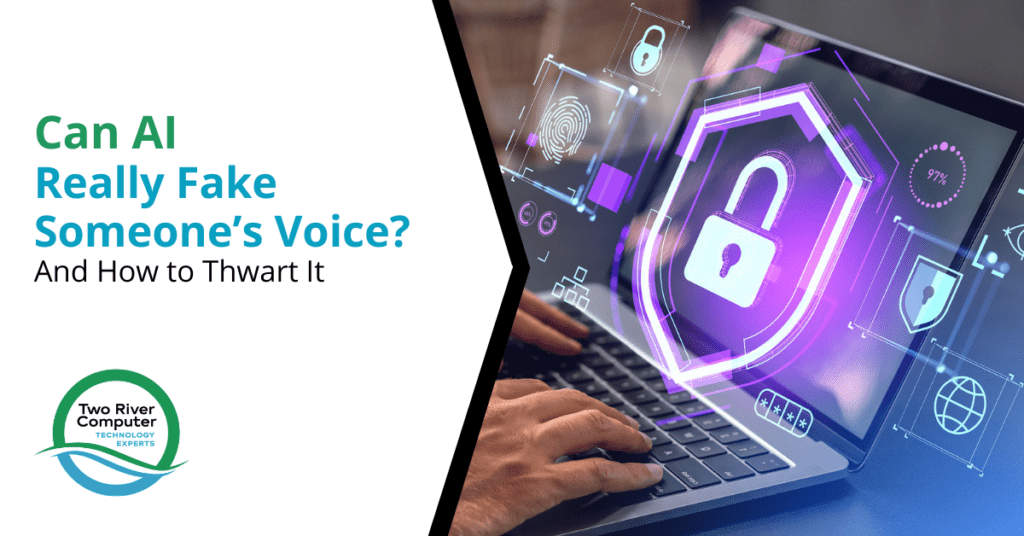
In the ever-evolving landscape of technology, Artificial Intelligence (AI) has made extraordinary strides in recent years, consistently pushing the boundaries of what we thought possible. One of the most intriguing and, at times, unsettling facets of AI’s progress is its ability to mimic and recreate human voices with remarkable precision.
This development has ignited a fascinating yet essential question: Can AI genuinely fake someone’s voice so convincingly that it can be used for deception? In this post, we’ll delve into the world of AI-generated voice, discussing the intricacies of its capabilities and the potential risks it poses. Furthermore, we’ll explore the countermeasures available to thwart such deceptions and safeguard against misuse.
The Astonishing World of AI-Generated Voice
The Birth of Voice Synthesis
The AI landscape has undergone a revolutionary transformation, with artificial intelligence advancing to an extent where it can not only comprehend human speech but also replicate it with striking accuracy. This capacity, known as voice synthesis, has unlocked myriad opportunities and challenges.
AI Advancements
AI technology has evolved to grasp the nuances of human speech, enabling it to synthesize voices that sound remarkably human. The journey from robotic and monotonous computerized speech to the lifelike voices we encounter today is nothing short of astonishing.
Versatility in Applications
The implications of AI voice synthesis are far-reaching. It is the technology behind the voice assistants we interact with daily, such as Siri, Alexa, and Google Assistant. Beyond the convenience of voice-controlled devices, this technology plays a pivotal role in making digital content more accessible for individuals with speech impairments. Moreover, it breathes life into characters in the realm of entertainment, contributing to more immersive and engaging narratives.
The Risks: Can AI Fake Someone’s Voice?
Deceptive Potential
AI’s ability to create convincing imitations of human voices has led to concerns about its deceptive potential. This capacity isn’t merely limited to producing generic voiceovers; it extends into the realms of deepfake voices and voice cloning, where specific individuals’ voices can be emulated with uncanny precision.
Deep Fake Voices
Deepfake technology, which garnered notoriety in the visual domain for manipulating images and videos, has found its way into voice synthesis. AI can craft deep fake voices that convincingly mimic real individuals, posing a significant challenge in determining genuine from synthetic audio.
Voice Cloning
AI’s voice cloning capabilities are equally astounding. This advanced functionality enables the AI system to replicate specific voices, capturing unique nuances in tone, cadence, and accent. The implications for identity deception are concerning.
Potential Misuses
The deceptive potential of AI-generated voices is accompanied by a range of potential misuses, some of which have already come to light. These misuses include scam calls where AI-generated voices impersonate trusted entities, identity theft facilitated by synthesized voices, and the creation of false audio testimonies for nefarious purposes.
Detecting AI-Generated Voices
Voiceprint Analysis
While AI-generated voices can be incredibly convincing, there are methods to detect their synthetic origin. One such method involves voiceprint analysis, a technique that relies on the uniqueness of each individual’s vocal characteristics.
Unique Voiceprints
Every individual possesses a distinctive voiceprint, which encompasses the vocal tract’s shape, vocal cord tension, and other physiological aspects. This uniqueness allows for the identification of individuals based on their voice alone.
Voice Analysis Tools
Advanced voice analysis tools and software have been developed to scrutinize vocal patterns and compare them against known voiceprints. These tools play a crucial role in identifying synthesized voices.
Audio Artifacts
AI-generated voices may exhibit certain inconsistencies and artifacts that, upon close examination, can reveal their synthetic nature.
Inconsistencies in Natural Speech
While AI has made significant progress in mimicking natural speech patterns, it is not infallible. Sometimes, you may detect subtle irregularities or deviations from the natural flow of speech.
Digital Artifacts
The process of voice synthesis often introduces subtle digital artifacts or glitches that can be discerned through careful listening or advanced analysis.
Thwarting AI-Generated Voice Deception
Voice Biometrics
To thwart AI-generated voice deception, there are various strategies and technologies at our disposal. One such strategy is the incorporation of voice biometrics for authentication and verification purposes.
Voice Recognition
Voice recognition technology leverages voice biometrics to establish a person’s identity based on their vocal characteristics. It is a potent tool for confirming the authenticity of a speaker.
Multi-Factor Authentication
Multi-factor authentication techniques, which combine voice recognition with other forms of authentication, further enhance the security of voice-based systems.
User Education
Raising awareness about the potential risks associated with AI-generated voice deception is a crucial step in thwarting its misuse.
Educating Users
Educating users about the existence and potential dangers of AI-generated voices empowers them to be vigilant and cautious when engaging in voice-based interactions.
Verifying Calls
Encouraging call recipients to verify the identity of the caller, particularly in scenarios where sensitive information is being shared, is a practical and effective safeguard.
Legal Measures
To curb the deceptive use of AI-generated voices, advocating for legal measures and ethical guidelines is essential.
Legislation
Advocating for legislation that restricts the deceptive use of AI-generated voices can deter misuse and impose penalties on those who engage in fraudulent activities.
Ethical Guidelines
Promoting ethical guidelines for the development and use of AI ensures that the technology is harnessed responsibly and for the benefit of society.
The Role of Two River Computer
At Two River Computer, we recognize the dynamic nature of technology and the importance of staying ahead of emerging advancements. Our commitment extends to providing you with the information and tools necessary to safeguard against the deceptive use of AI-generated voices. To explore our solutions or seek assistance on this matter, please don’t hesitate to contact us. We are here to help you navigate the ever-evolving technological landscape securely and responsibly.


